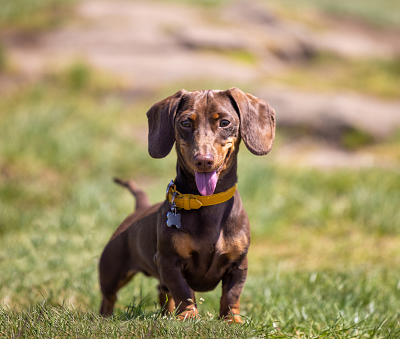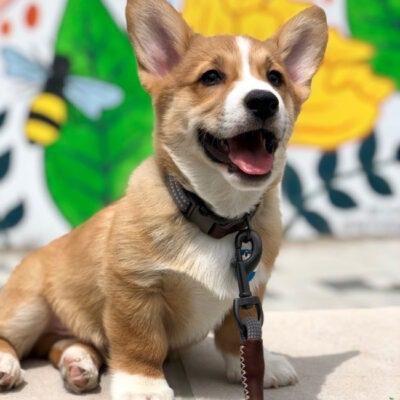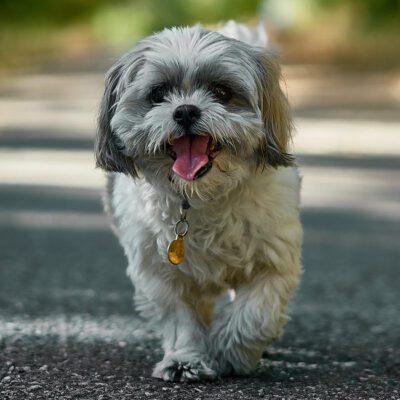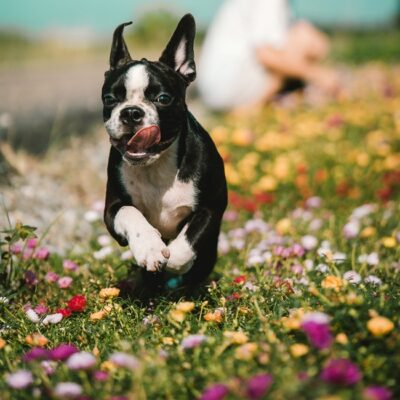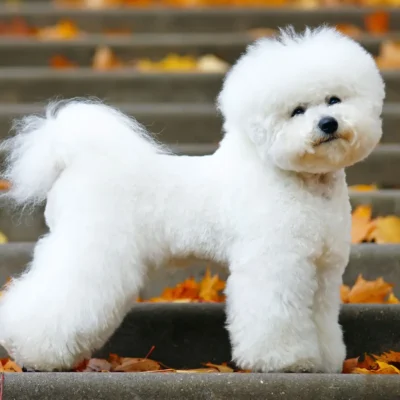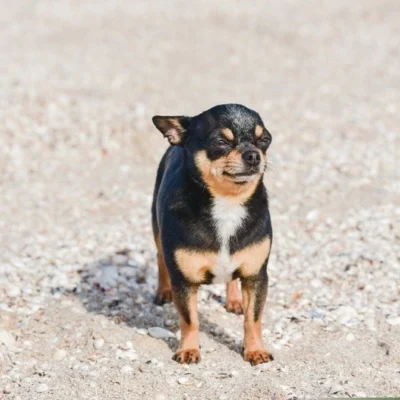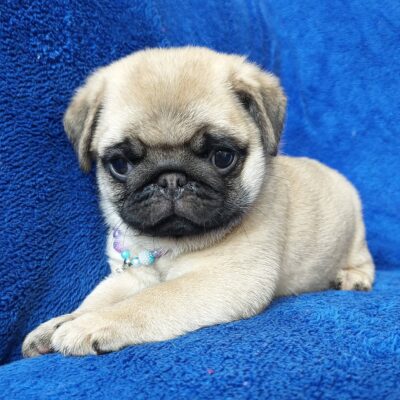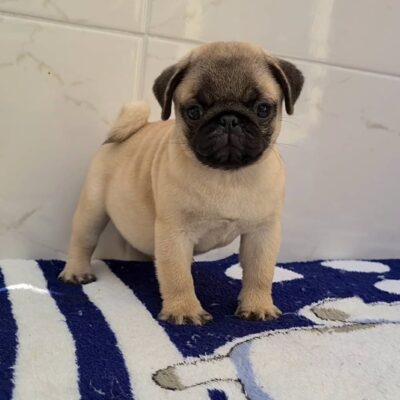
Pugs are genuinely delightful little companions! Their vibrant personalities and joyful spirits make them a pleasure to be around. Super affectionate and playful, Pugs are fantastic playmates for kids and excellent companions for singles, couples, and seniors. These lovable pups shower you with endless affection and love to stay close, following you on every adventure. Whether snuggling on the couch or enjoying a leisurely walk around the neighbourhood, their happiness is contagious. Having a Pug in your life brings so much warmth and joy—what’s not to love?
| Attribute | Details |
|---|---|
| Same As | |
| Breed Type / Mix | Purebred |
| Life Span | 12-15 yrs |
| Training | Determined |
| Shedding | Regularly |
| Energy | Moderate Energy |
| Temperament | Affectionate, Alert, Intelligent, Protective, Sociable |
| Adult Weight | 14-25 lbs |
| Adult Height | 10-11 in |
- AKC Recognition: Pugs have been part of the Toy Group since 1885.
- Gentle and Playful: Great with kids; they are fun and affectionate playmates.
- Perfect for Novices: Sweet, tiny, and trainable, Pug puppies are ideal for first-time pet owners.
- Highly Adaptable: Thrive in small apartments or large homes with equal ease.
- Sociable and Friendly: Get along well with other dogs, pets, and strangers.
- Great Watchdogs: Quiet yet vigilant and courageous.
- Goofy and Entertaining: Known for amusing antics that keep everyone laughing.
- Low-Maintenance: Easy to groom and require minimal exercise.
- Eager to Please: Fun to train and deeply attached to their owners.

Pugs are compact, sturdy dogs with a distinctive look and a charming personality. Their playful, bouncy gait and proud demeanor make them approachable and endearing. Known for their short, dark muzzles (often referred to as a “mask”) and expressive facial wrinkles, Pugs have a unique appearance that sets them apart. Their tightly curled tails, typically carried over their backs, add to their characteristic charm.
Physical Traits
Pugs are muscular and well-built, with several notable features:
- Eyes: Large, round, dark, and sparkly, giving them a curious and affectionate expression.
- Ears: Available in two types—rose (folded back) or button (folded forward).
- Neck: Short yet thick and sturdy, complementing their compact frame.
- Legs: Short and strong, supporting their robust, square-shaped bodies.
- Coat: Pugs have a double-layered coat that is short, smooth, and glossy. Coat colors include black (less common but highly sought-after) and fawn (with shades ranging from light beige to deeper apricot) paired with a contrasting black mask.
Size and Weight
Pugs belong to the Toy Group of dogs due to their small stature.
- Height: 10–11 inches at the shoulder.
- Weight: 14–25 pounds, with females typically on the smaller end of the spectrum.
Despite their small size, Pugs are solidly built and give an impression of strength and resilience, which is one of the traits that makes them such adored companions.
Often described as multum in parvo (Latin for “a lot of dog in a small space”), the Pug is brimming with personality and charm. These dogs are known for their affectionate, gentle, and even-tempered nature, making them exceptional companions for families and individuals alike.
Key Personality Traits:
- Affectionate and Loyal: Pugs are deeply attached to their human family and thrive on attention. They often follow their owners from room to room, ready to provide and receive endless cuddles.
- Gentle and Patient: Their sturdy build makes them well-suited for households with small children, as they are tolerant of playful handling and rarely show aggression.
- Habit-Loving Creatures: Pugs appreciate routine and prefer consistency in their daily lives. Sudden changes, especially those that separate them from their people, can cause them distress.
Favorite Activities:
- Cuddles and Pampering: Pugs adore belly rubs, full-body massages, and snuggling close to their humans.
- Playtime and Socializing: They enjoy games of fetch, meeting other dogs at the park, and participating in interactive play with their families.
- Dog Sports: While their compact size might not make them the fastest runners, Pugs can excel in obedience, agility, and rally sports with proper training.
- Relaxing: Naps are another cherished pastime for these laid-back dogs, especially when paired with their favorite humans nearby.
Travel-Friendly Companions
Thanks to their small size and good manners, Pugs make excellent travel buddies. They’re happy to accompany their owners on errands, vacations, or even to work. Their outgoing and curious demeanor ensures they’re up for any adventure, as long as they’re close to their beloved family.
Grooming Needs for Pugs
Pugs are considered low-maintenance in terms of grooming, but they do require consistent care to manage shedding and maintain their overall hygiene and health.
Coat Care:
- Shedding: Pugs do shed frequently, particularly during seasonal changes. Weekly brushing with a bristle brush or grooming glove is recommended to remove loose hair and reduce shedding.
- Bathing: Bathe Pugs every 1-2 months to keep their coat clean and glossy.
- Wrinkle Cleaning: The folds on their face and body should be checked and wiped regularly with a damp cloth to prevent irritation or infections.
Dental Hygiene:
- Pugs are prone to gum disease, so it’s essential to brush their teeth 4-5 times a week using vet-approved toothpaste and a dog-friendly toothbrush.
Nail and Ear Care:
- Regular nail trimming is necessary as Pugs don’t naturally wear their nails down due to their relatively low activity levels.
- Their ears should be checked weekly and cleaned as needed to avoid infections.
Seasonal Protection:
- Summer: Pugs are prone to overheating due to their short muzzle and dense body structure. Limit outdoor activities during hot weather.
- Winter: Dress them in doggy jackets or sweaters to keep them warm since their short coat doesn’t provide much insulation.
Exercise Needs for Pugs
Pugs have moderate energy levels and low exercise requirements. However, maintaining regular activity is important to keep them healthy and prevent obesity.
- Daily Walks: Two short walks per day (around 20-30 minutes each) are ideal, especially during cooler times of the day.
- Indoor Play: Complement walks with fun indoor activities like playing fetch or engaging with interactive toys.
- Avoid Overexertion: Pugs’ short snouts make them prone to breathing difficulties, so avoid intense exercise and keep them hydrated.
Health Considerations for Pugs
Pugs are generally resilient but are prone to certain health issues.
Common Health Problems:
- Breathing Issues: Due to their brachycephalic (flat-faced) structure, Pugs may experience breathing difficulties, particularly in extreme temperatures.
- Skin Allergies: Wrinkles require regular cleaning to prevent dermatitis or infections.
- Dental Problems: Regular brushing is essential to avoid gum disease and tooth loss.
- Obesity: Pugs love food and can easily become overweight if overfed or under-exercised.
Life Expectancy:
Pugs typically live 12–15 years, but with proper care, many exceed this lifespan. Remarkably, a Pug named Snookie lived to be 27 years old, proving the potential longevity of the breed.
Training Pugs
Pugs are intelligent, playful, and eager to please, making them easy to train with the right approach.
Tips for Training:
- Positive Reinforcement: Use rewards, praise, and gentle encouragement. Avoid yelling or harsh methods, as Pugs are sensitive and can become withdrawn or fearful.
- Keep Sessions Short: Pugs can be easily distracted, so keep training sessions fun and limited to 10-15 minutes.
- Prevent Small Dog Syndrome: Over-pampering can lead to stubborn behavior, so establish consistent rules and boundaries.
Training Focus Areas:
- Basic Commands: Teach obedience and tricks to stimulate their natural intelligence.
- Socialization: Expose pugs to different people, pets, and environments early on.
- Separation Anxiety: Start by leaving them alone for short periods, gradually increasing the time to help them adjust to being home alone.
Conclusion
The Pug’s combination of charm, loyalty, and adaptability makes it an excellent companion. With regular grooming, a moderate exercise routine, and consistent training, these delightful dogs thrive as beloved family pets. Whether snuggling on the couch or showing off tricks, Pugs are sure to win hearts wherever they go.
Pugs, with their distinctive wrinkles and loving demeanor, are among the oldest dog breeds, boasting a history that spans over two millennia. Their charm has been immortalized in art, sculptures, and literature, and their roles in history have made them beloved across cultures.
Ancient Origins in China
Pugs originated in Ancient China, where they were cherished as royal companion pets during the reigns of Chinese dynasties. Reserved for emperors, empresses, and the elite, these dogs lived lives of opulence. They were often dressed in luxurious garments, pampered in royal chambers, and, according to some accounts, even assigned personal guards and servants. At the time, only royalty or the exceptionally wealthy could afford Pugs, as their sole purpose was to provide companionship—an unattainable luxury for most people.
Popularity Beyond China
Pugs’ appeal quickly spread beyond the Chinese Empire:
- Tibetan Monasteries: Tibetan monks were also fond of Pugs, appreciating their companionship and serene presence.
- Arrival in Europe: In the 16th century, Dutch traders introduced Pugs to Europe, where they became known as Mopshond. Their intelligence and loyalty earned them favor in royal courts.
- The House of Orange: A Pug famously saved Prince William of Orange by alerting him to an invasion, leading to the breed becoming the official dog of the House of Orange.
- Queen Victoria’s Affection: Queen Victoria of England adored Pugs and personally owned several. Her fondness for the breed further cemented its popularity in the West.
Modern Recognition
- The American Kennel Club officially recognized Pugs as a breed in 1885.
- In 1931, the Pug Dog Club of America was established, reflecting the breed’s growing following in the United States.
Designer Pug Mixes
Pugs’ endearing qualities and unique appearance have made them a popular choice for crossbreeding. Among the most beloved Pug mixes are:
- Frug: A French Bulldog and Pug mix, known for its playful yet relaxed nature.
- Chug: A Chihuahua and Pug mix, combining charm with spunky energy.
- Pugapoo: A Pug and Poodle mix, celebrated for its intelligence and low-shedding coat.
Enduring Popularity
Through centuries, from the opulent courts of China to modern family homes, Pugs have proven themselves as loyal, affectionate, and versatile companions. Whether as royal lapdogs or playful household pets, Pugs continue to win hearts worldwide. Their rich history and loving nature ensure that their popularity remains unwavering.
Is ‘Teacup Pug’ an actual breed variation recognized by kennel clubs? No, the AKC and other major kennel clubs recognize only one standard size for Pugs (typically 14-18 pounds). ‘Teacup,’ ‘Mini,’ or ‘Pocket’ are unofficial marketing terms used by some breeders for Pugs deliberately bred to be significantly smaller, which raises serious health and ethical concerns.
How much smaller is a ‘Teacup Pug’ compared to a standard Pug? Breeders marketing ‘teacups’ often aim for adult weights under 10 pounds, sometimes as low as 5-8 pounds. This is substantially smaller than the 14-18 pound standard and achieved through practices that often compromise health.
Do Teacup Pugs have worse breathing problems (BOAS) than standard Pugs? Yes, almost certainly. Pugs are already severely brachycephalic (flat-faced) and prone to Brachycephalic Obstructive Airway Syndrome. Miniaturizing them further restricts their already compromised airways, leading to potentially life-threatening respiratory distress, severe exercise intolerance, and extreme heat sensitivity.
What specific health risks are drastically increased in Teacup Pugs? Beyond severe BOAS, they face heightened risks of hypoglycemia, hydrocephalus, open fontanels, collapsing trachea, heart defects, liver shunts, severe dental overcrowding in tiny jaws, spinal issues (like hemivertebrae, already common in Pugs), and extremely fragile bones.
Can Teacup Pugs regulate their body temperature effectively? No, this is extremely difficult for them. Standard Pugs already struggle with overheating due to breathing issues. Teacup versions, with less body mass and potentially even worse breathing, are dangerously susceptible to both hyperthermia (overheating) and hypothermia (chilling).
Is the lifespan of a Teacup Pug shorter than a standard Pug? Very often, yes. The combination of severe brachycephalic issues exacerbated by miniaturization, plus the additional health problems associated with ‘teacup’ size, frequently leads to a significantly shorter lifespan than the standard Pug’s 12-15 years.
How much exercise can a Teacup Pug safely tolerate? Extremely minimal. Due to severe breathing limitations, risk of overheating, potential spinal issues, and overall fragility, only very short, slow indoor “strolls” or extremely brief outdoor potty breaks in cool weather are advisable. Any exertion is risky.
Are Teacup Pugs suitable for families with children? Absolutely not recommended. Their extreme fragility (bones, spine, potential open fontanel) combined with severe breathing risks makes them highly unsuitable for homes with children, who could easily cause serious or fatal injuries accidentally.
Do Teacup Pugs still need their facial wrinkles cleaned? Yes, absolutely. Skin fold dermatitis is a common Pug issue regardless of size. Wrinkles must be cleaned and dried daily to prevent painful infections. This can be more challenging on a tiny, fragile dog.
What is the typical price for a Teacup Pug puppy? Prices are usually exorbitant, often ranging from $3,000 to $8,000 or more, driven by the misleading “rare” or “designer” marketing. This price reflects unethical demand, not health or quality breeding.
Do Teacup Pugs retain the charming, clownish Pug personality? While they might have the genetic predisposition for the Pug’s loving and comical nature, their severe physical limitations and potential constant discomfort or anxiety due to health issues can significantly overshadow their personality.
Why do responsible Pug breeders (like those in the Pug Dog Club of America) condemn breeding ‘teacups’? Reputable breeders focus on improving breed health within the standard, addressing existing serious issues like BOAS and PDE. Deliberately breeding for extreme smallness exacerbates these problems exponentially and is considered highly unethical due to the poor quality of life it creates.
Are Teacup Pugs prone to severe dental problems? Yes, extremely so. Fitting the standard number of teeth into a miniature jaw leads to severe overcrowding, malocclusion (bad bite), retained baby teeth, and a very high risk of early and severe periodontal disease. Diligent dental care is crucial but difficult.
What kind of daily special care does a Teacup Pug require? Constant monitoring for respiratory distress, hypoglycemia, and injury. Careful feeding schedules (frequent small meals), gentle handling only, maintaining a strictly temperature-controlled environment (cool, never hot), diligent dental care, and daily wrinkle cleaning are essential.
Are Teacup Pugs at higher risk for eye problems like proptosis (eye popping out)? Yes. All Pugs have prominent eyes vulnerable to injury and proptosis. The potentially more fragile structure of a ‘teacup’ could increase this risk. Careful handling and avoiding pressure near the head/neck are vital.
Is Pug Dog Encephalitis (PDE) a concern in Teacup Pugs? PDE is a devastating neurological disease specific to Pugs. While size itself isn’t directly linked, the overall poor health and potentially compromised genetics resulting from breeding for extreme size could theoretically impact susceptibility or resilience. Responsible breeders screen for health regardless of size.
What’s a healthier alternative if I like Pugs but want a smaller dog? Consider a well-bred Pug from a reputable breeder focusing on health (wider nostrils, health-tested parents) who happens to be on the smaller end of the *standard* (e.g., closer to 14 lbs). Alternatively, explore other small companion breeds *without* brachycephaly for fewer inherent health risks.
Do Teacup Pugs shed as much as standard Pugs? Yes, Pugs are notorious shedders (“Pug glitter”). Size does not change their coat type or shedding level. Regular brushing is needed to manage the shedding.
Are Teacup Pugs easy to train? Pugs can be intelligent but notoriously stubborn and food-motivated. Training a teacup version requires extreme patience, positive reinforcement, very short sessions due to physical limitations, and awareness of their fragility (no rough handling or corrections).
Can Teacup Pugs use stairs or jump on furniture? Absolutely not. This is extremely dangerous due to their fragile bones, risk of falls, and the high prevalence of spinal issues like hemivertebrae in the breed. Ramps must be provided for any elevation changes.





